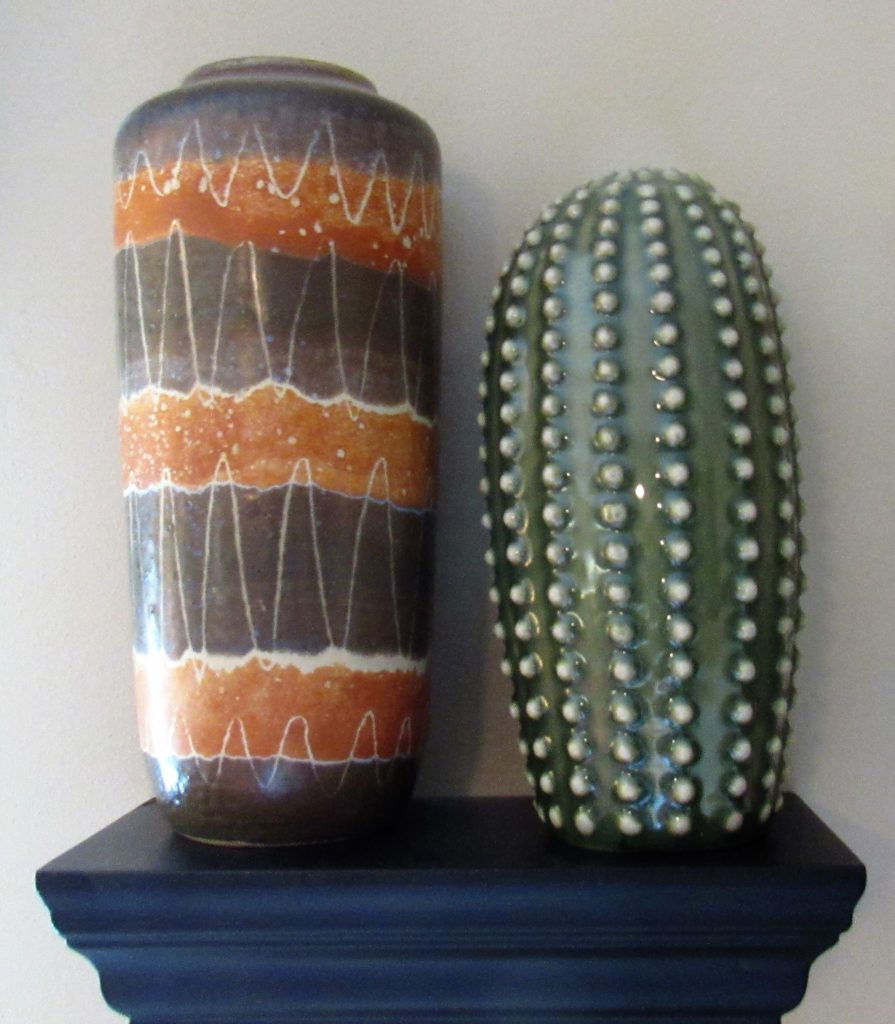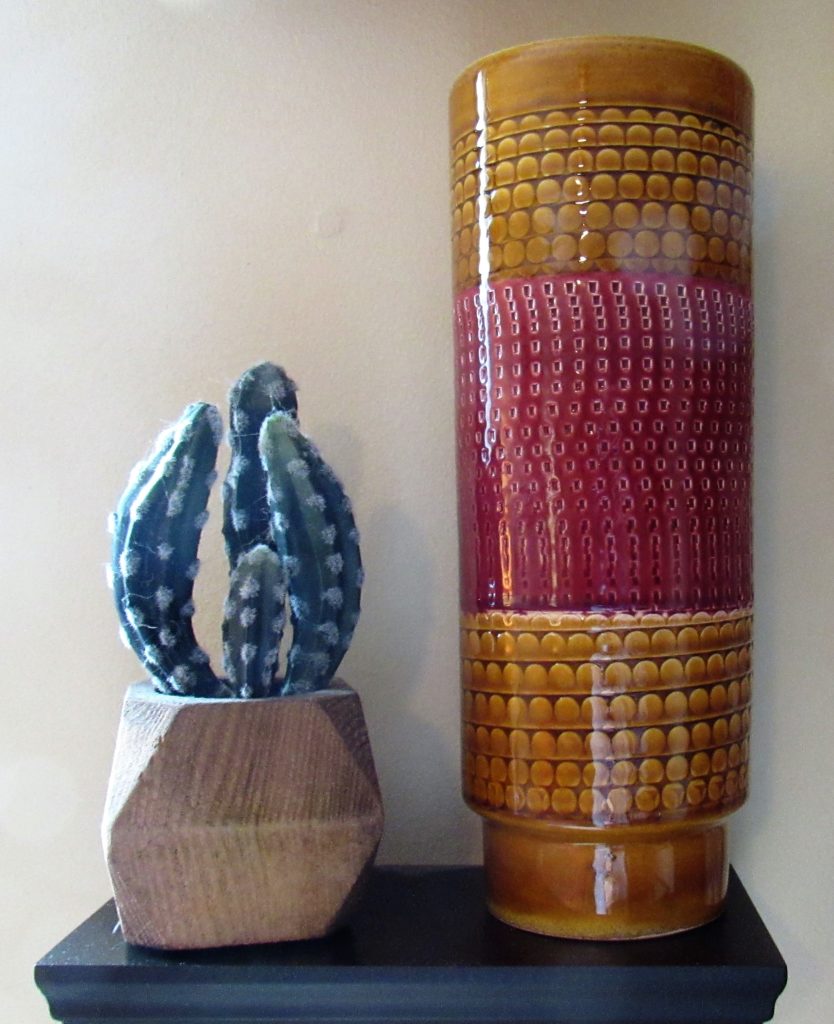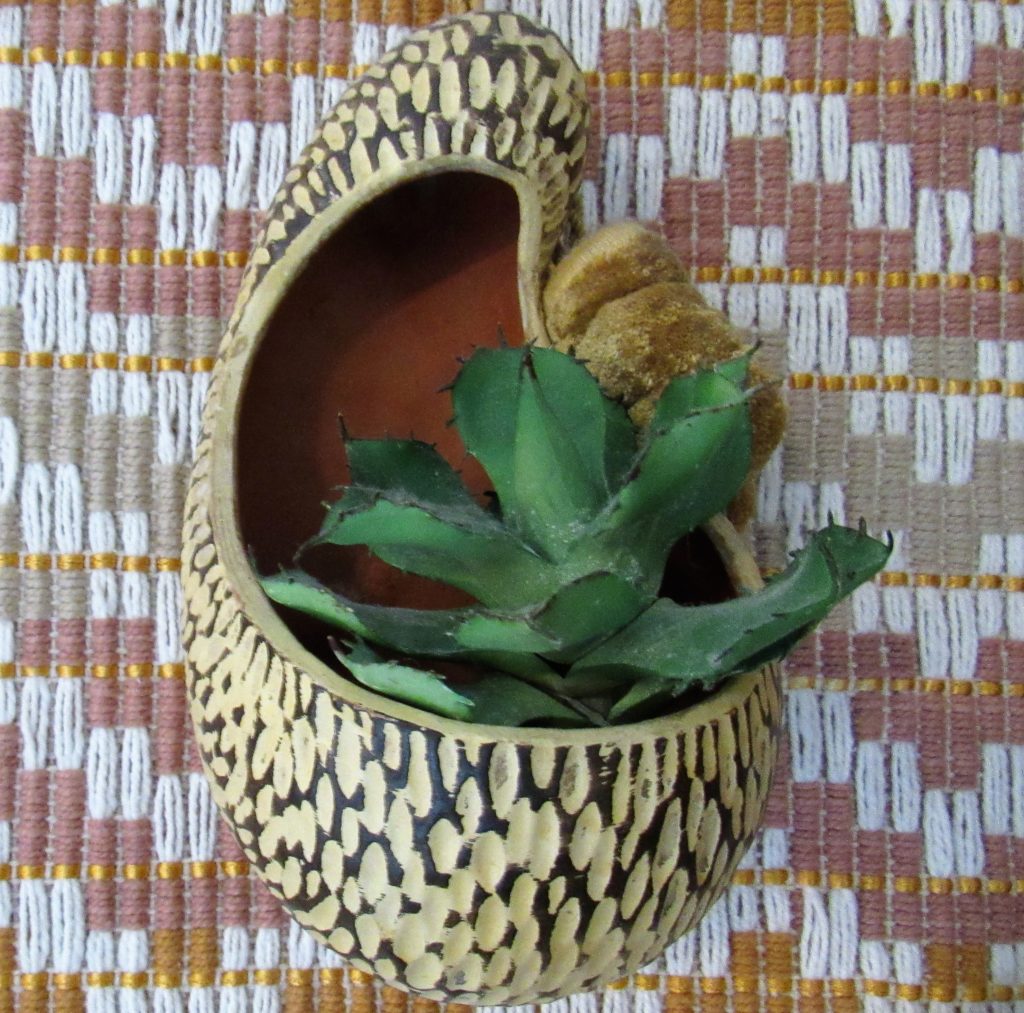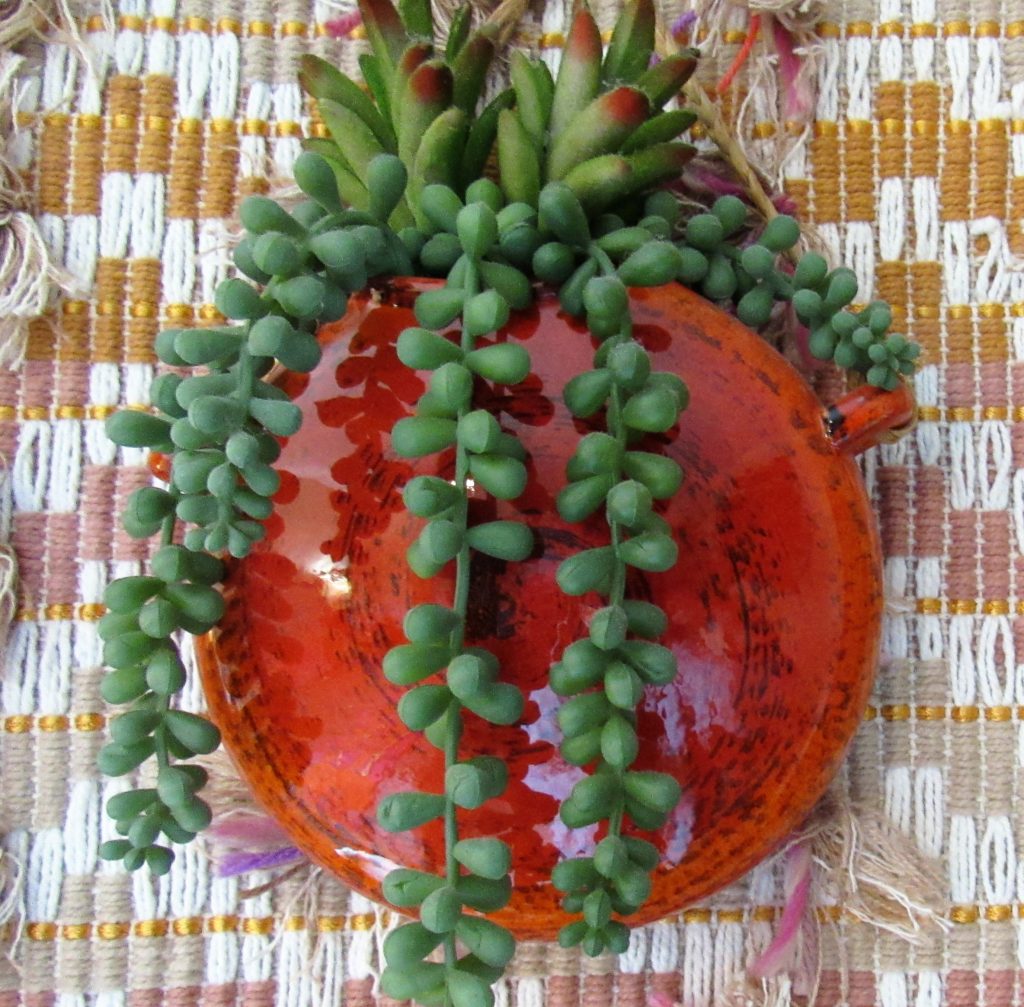
I started collecting about five years ago because I couldn’t find new decor items that complemented my home’s midcentury decor. Since then, my finds have added warmth, depth, and interest to my home.
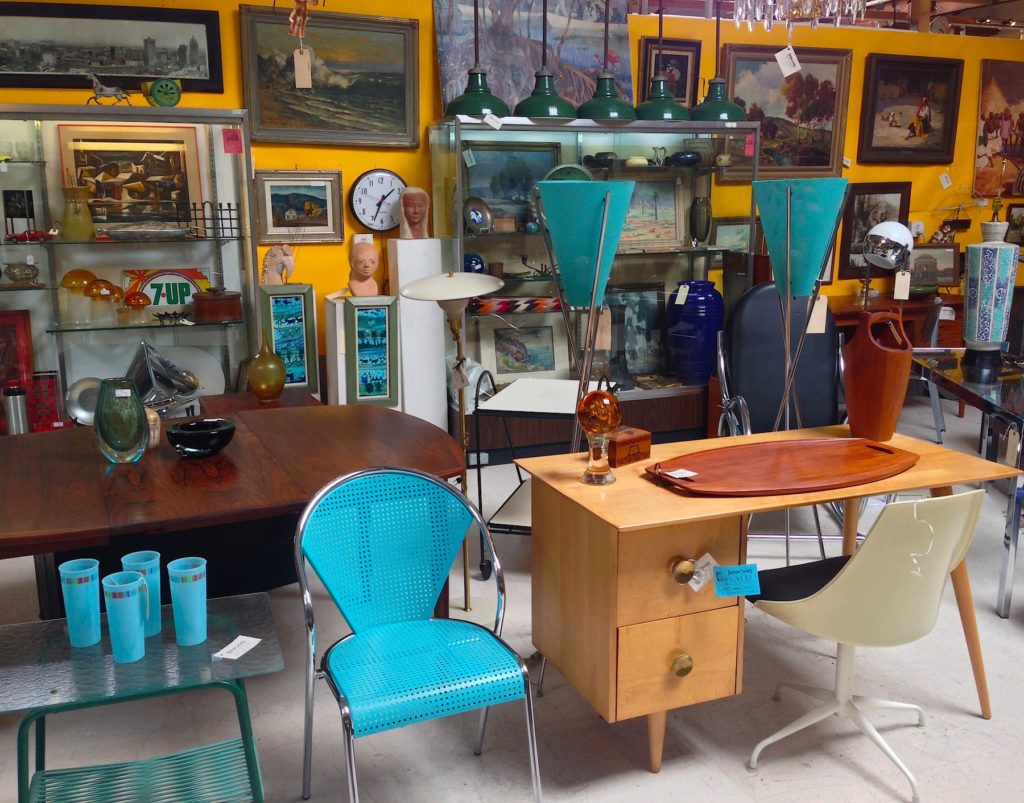
My growing interest in midcentury modern design after we moved got me looking more closely at magazines and Pinterest with an eye toward what and how interior designers and savvy homeowners collected and displayed.
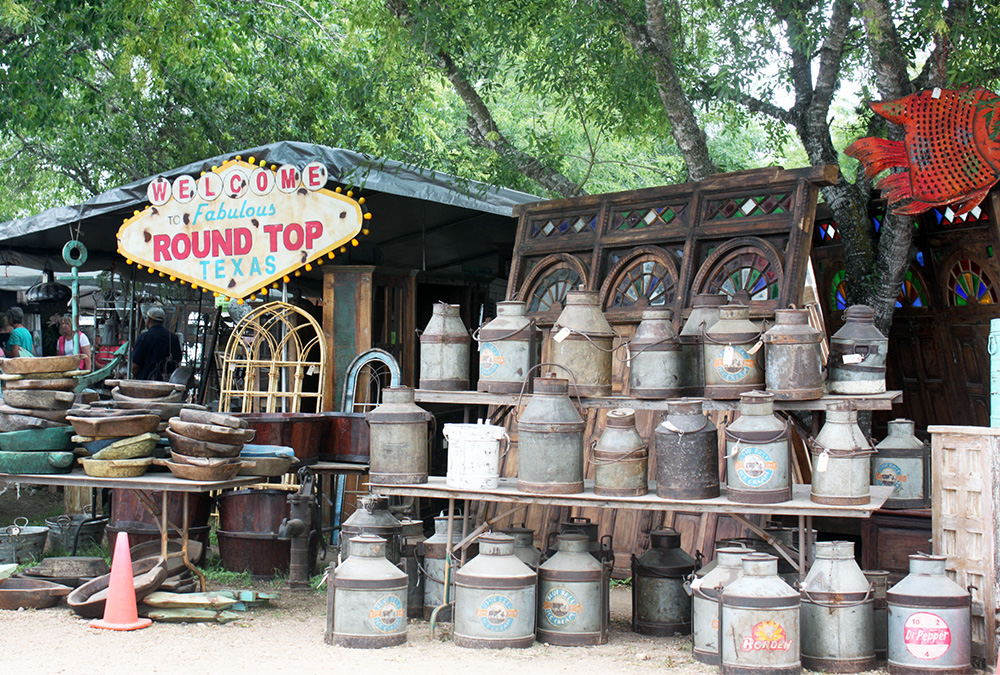
And as I saw items that interested me, I searched them out on ebay, which is still my best source for finding new additions to my collections at the best prices. I also visit vintage and antiques fairs from time to time and am a regular at area thrift shops.
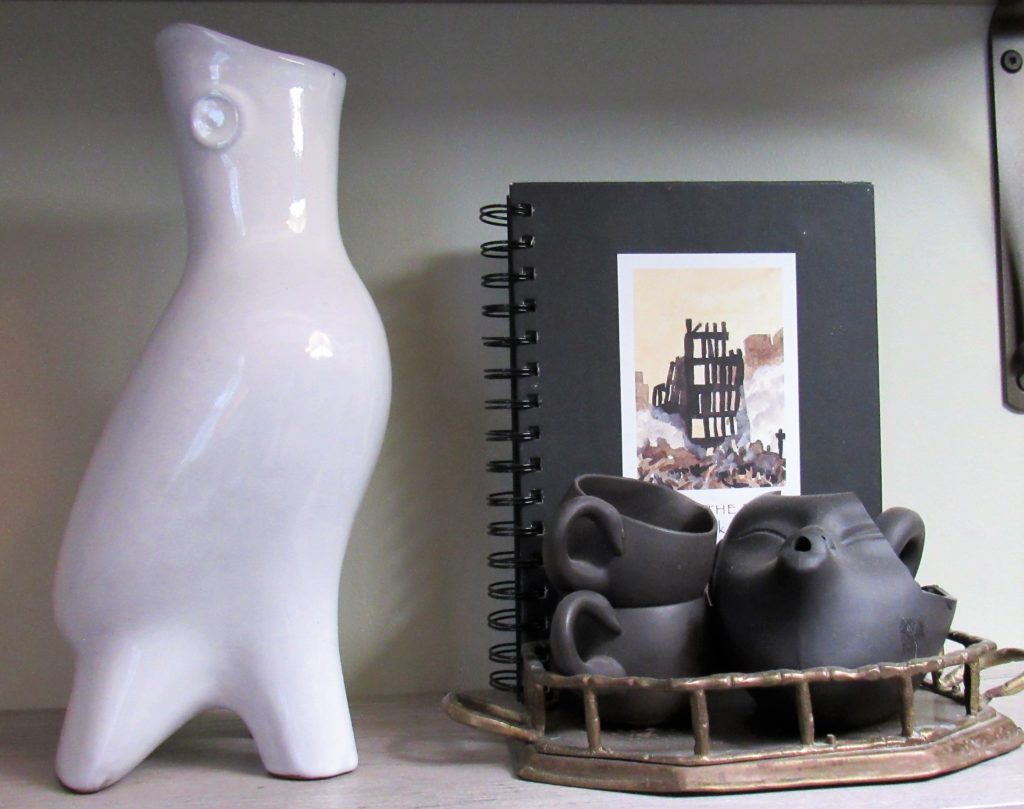
But how did I decide specifically what to collect? I simply bought things I loved and let nature take its course. My nature, that is–I’m curious, sometimes to a fault. Once I see something that intrigues me, I read all about it and look and look and look. Eventually I muster up enough courage to buy, and soon I find myself selling off some things when I find others I like better.

A collection, you will learn, is constantly in flux, and mine is no different.

Currently it mostly reflects midcentury modern design styles and includes ceramics, copper and wood pieces. When a piece ticks more than one of those boxes, my interest doubles.
With that in mind, here are five items I collect and use in my home’s decor…
1. Pottery: mostly vases, mostly West German
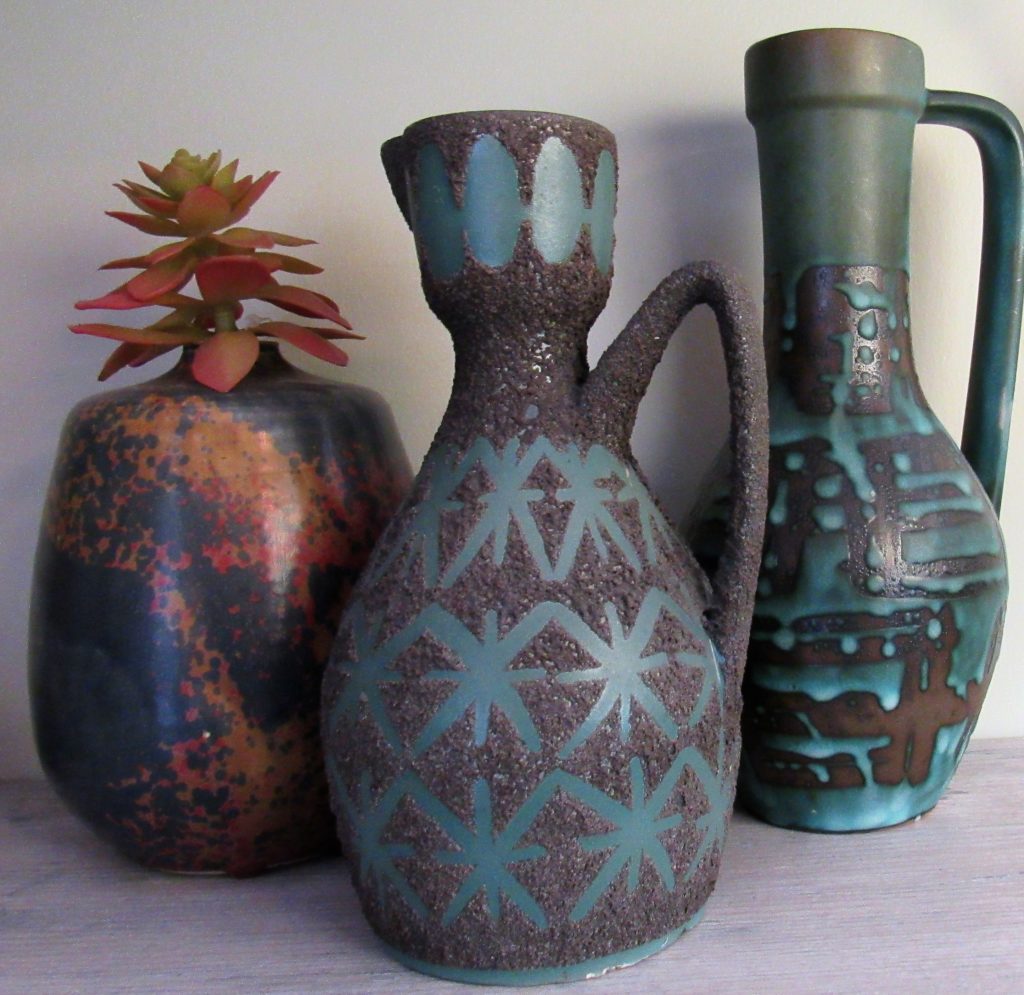
That a ceramic piece is marked “West German” immediately qualifies it as vintage because West Germany only existed from 1949 to 1990. After World War II there was an explosion of creativity in German potteries, and a number of well-known artists designed pieces for manufacturers.
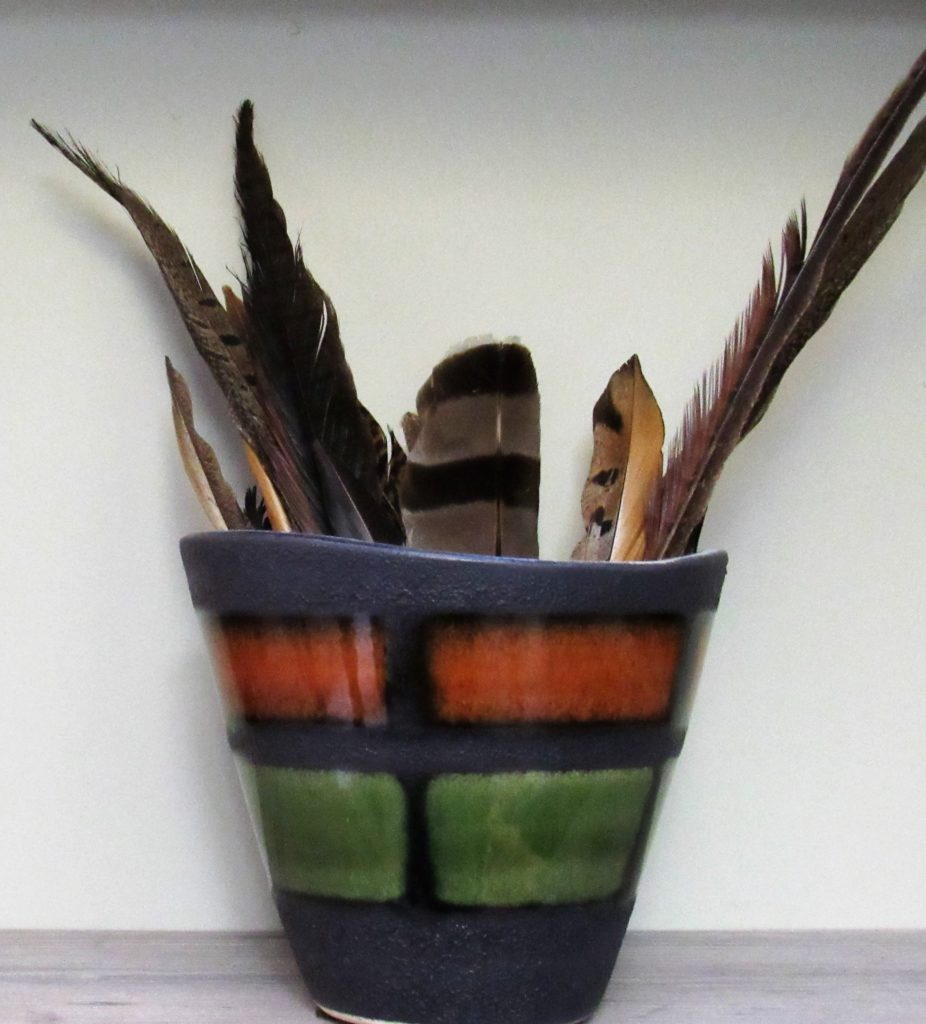
The era has become popularly known online as “fat lava” because many of the pieces feature thick, volcanic glazes.
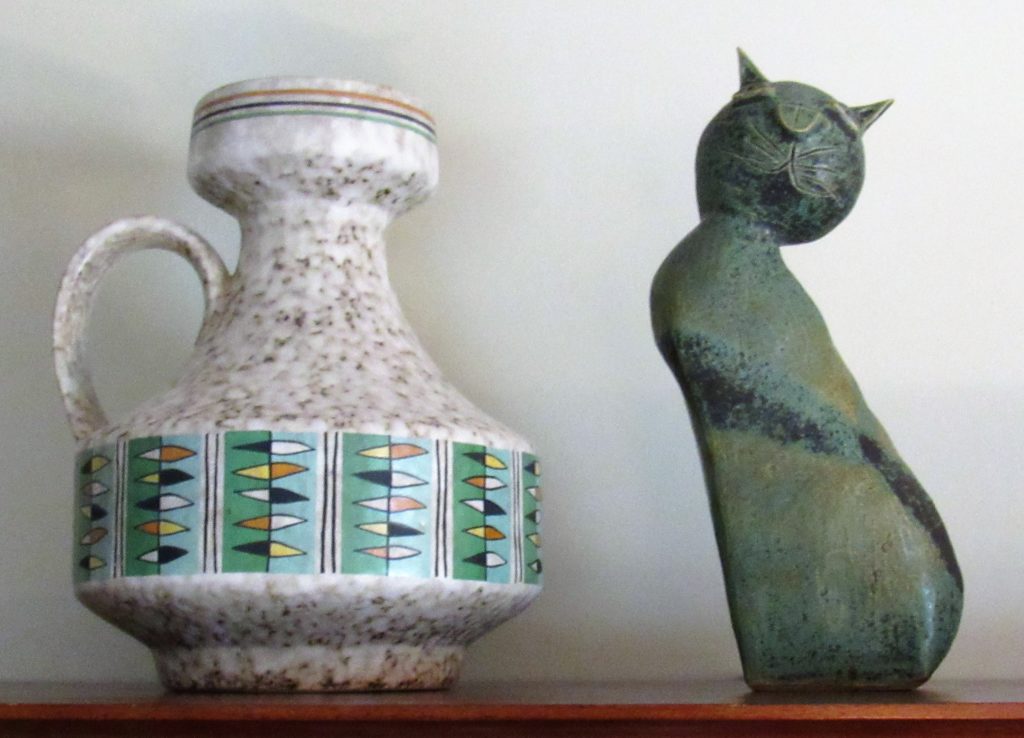
My collection is comprised of manufactured shapes with hand-applied decor as well as studio art pottery–that is, hand-thrown on a wheel or hand-shaped. In the above photo, the jug is manufactured but hand-decorated and the cat is completely handmade.
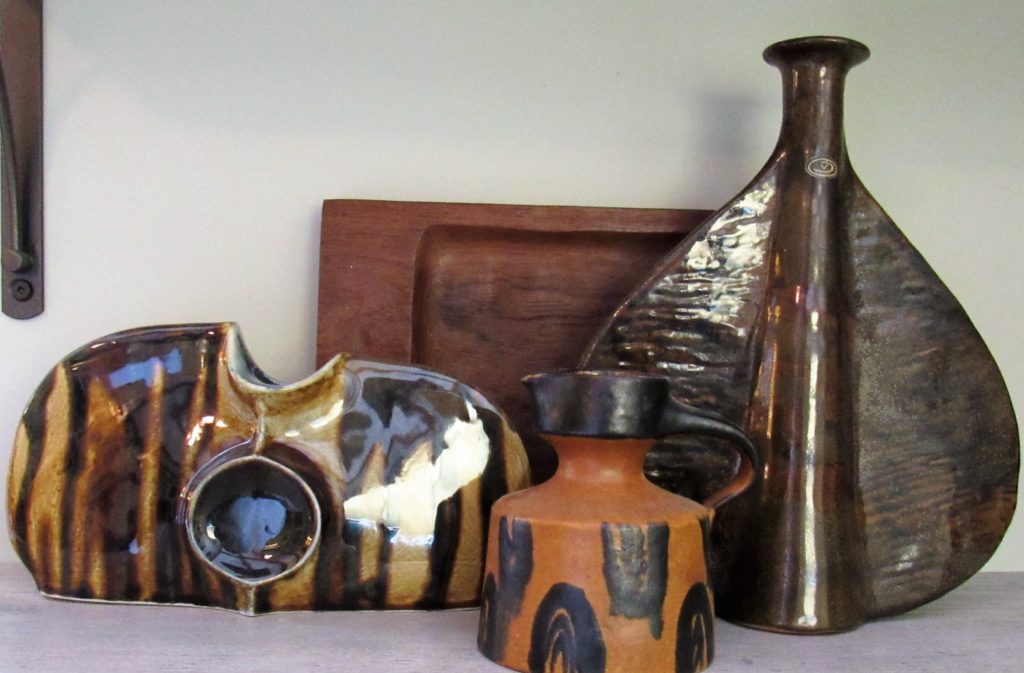
Most of my pieces are from the 1960s-70s era. Some are signed and/or carry a manufacturers’ mark, but some are not identified. You can tell a studio piece from a manufactured one by the base–unglazed versus all or partially glazed, respectively.
As for manufacturers, I have a few reputable dealers I buy from who identify the origin of their stock by shapes and glazes. I then keep their record of each piece I buy to use if I decide to re-sell it.
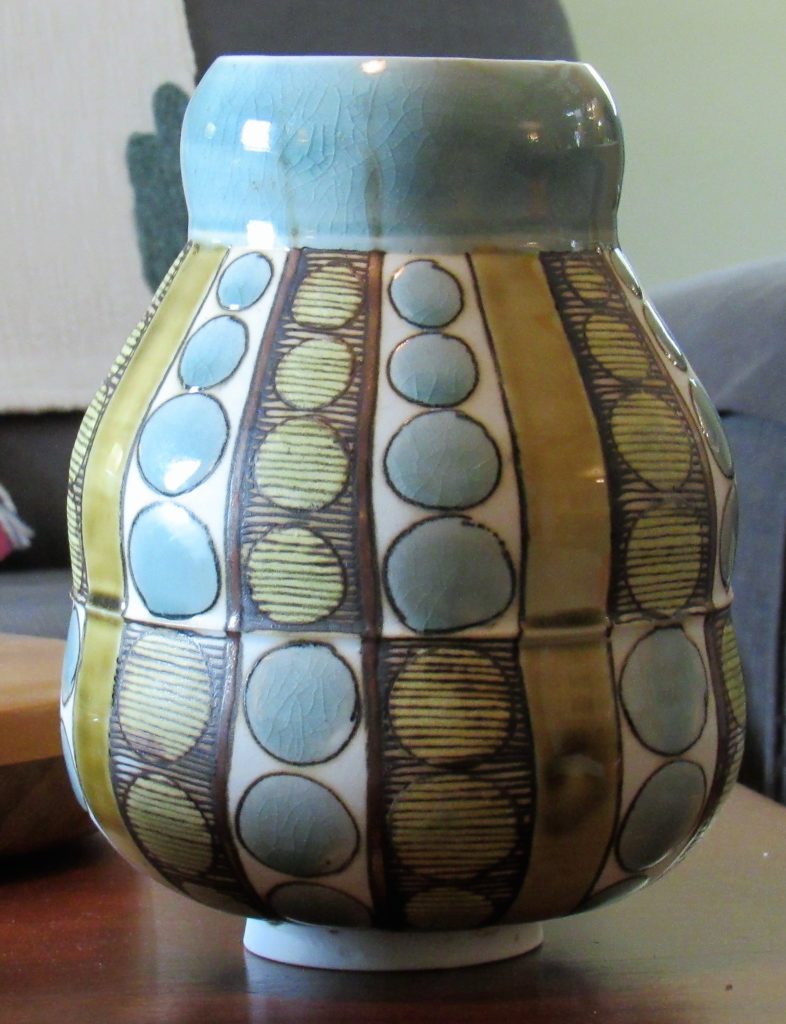
One exception to the rest of my collection but a piece I absolutely love is this patterned studio vase, signed and dated 2016. It’s neither German nor vintage, but I simply ADORE the decor. It mixes well with my period pieces and the style of my home, and I paid less than $20 for it.

I’ve paid anywhere from $10 to $110 for pieces in my collection. Add to that the cost to ship it from Europe–anywhere from $15 to $50. So if you’re lucky enough to find vintage fat lava pieces in the United States, the prices will almost always be higher because someone paid to ship them here.
There are exceptions, of course, and once your eye is trained you will run across some. I once bought a 1950s West German piece on ebay for $3. Although I didn’t really care for the decor, I knew what it was and resold it for around $20.
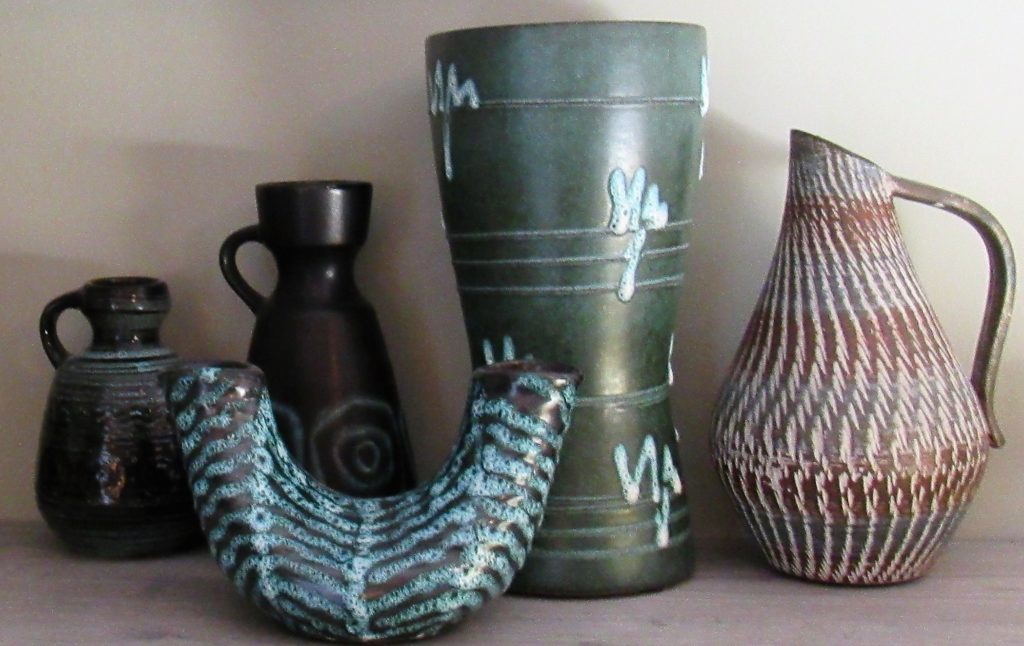
The two righthand vases in this photo and the U-shaped vase in front are the three pieces that started my collection. Pieces with teal and turquoise glazes seem to continue to please me.
2. Copper pitchers with teak handles

These are most often Danish, though most are unmarked. I look for interesting body shapes, textures, sizes, and, particularly, handle shapes. Most can be purchased for under $25. But again, often from a European source, so shipping adds to the price.
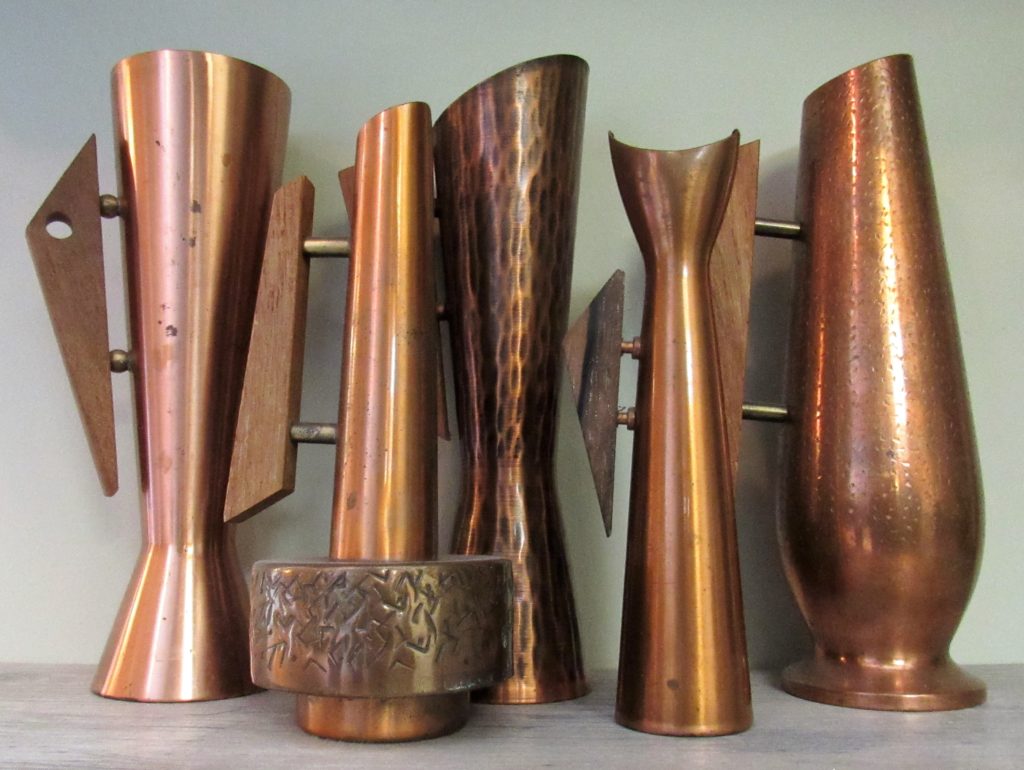
My favorite is the smallest one in my collection (second from right), which cost less than $10 because the lip is bent. But I liked that. I thought it was distinctive. Vintage items are seldom perfect, but that’s part of their story.
Copper oxidizes, and that patina adds to the value. Expect some scratches and dents as well, though those tend to detract from value. You have to decide what you like and can live with for the price.
3. Ceramic ashtrays
I’m not a smoker–never have been. But I grew up in the 1960s when most all the adults in my life were smokers. And every home had these incredible, colorful ceramic ashtrays–usually a pair, one for each end table flanking the living room sofa. They were a source of pride.
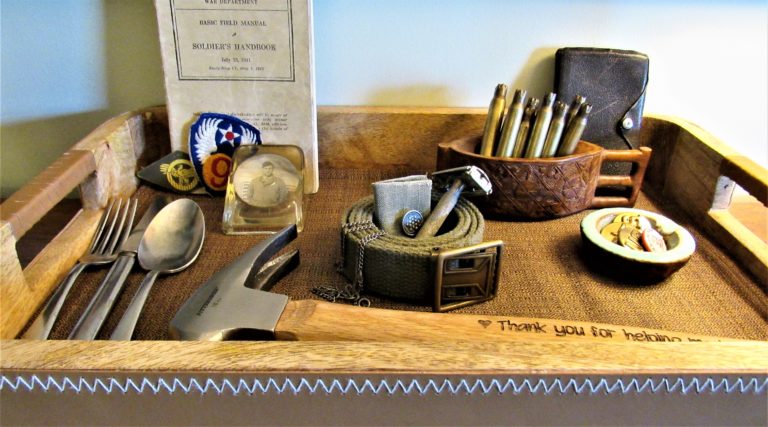
Many of the ones I own also are fat lava from a European heritage. I use them as trinket dishes (small one on the right)…

…stack them on shelves…
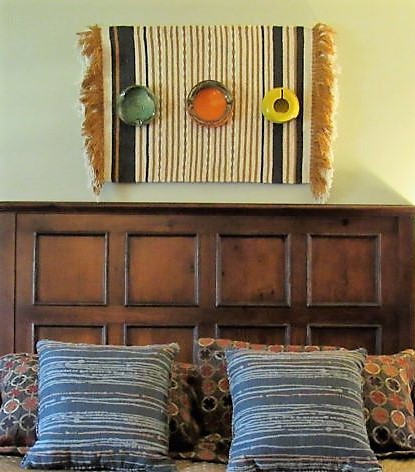
…and hang them in wall displays.
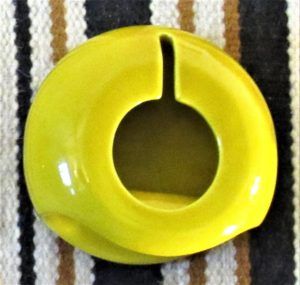
Some can be quite expensive, but I paid $5 to $15 a piece for mine. This fun, UFO-shaped one was under $10. I’m always on the lookout for these at a good price, as I want to decorate my hallway walls with them eventually.
4. Danish modern woodware
Many of these pieces are teak and walnut, but some combine other varieties of wood, including exotics. Most of my collection is handmade, though some is manufactured.
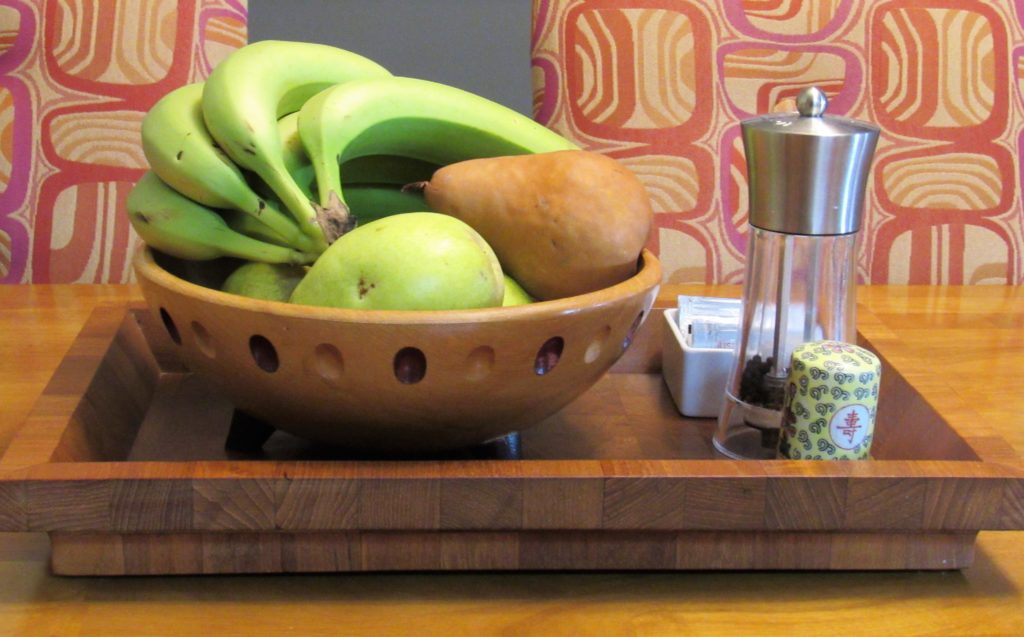
I paid around $35 for this early Dansk tray (made in Denmark; later Dansk is often made in Japan or China) and about $25 for the handmade Canadian thumbprint bowl sitting on it. Both adorn my kitchen table.
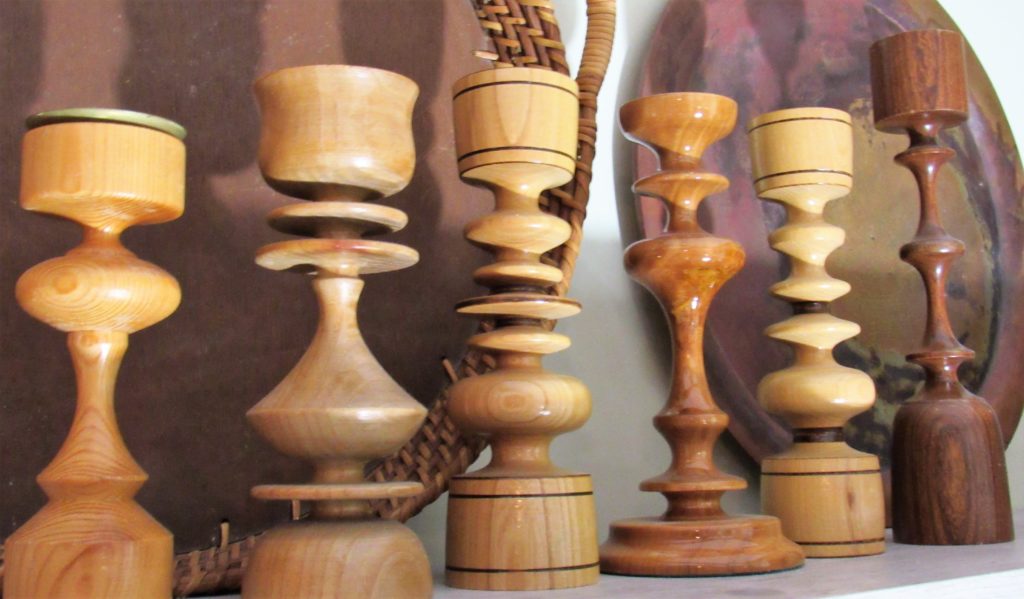
These lathe-turned European candleholders were around $10 to $20 each. I don’t burn candles in them, though. I love them simply as sculptural pieces and group them by height.

Occasionally I find painted ones, and usually the paint has some nicks in it, but that’s part of the charm.
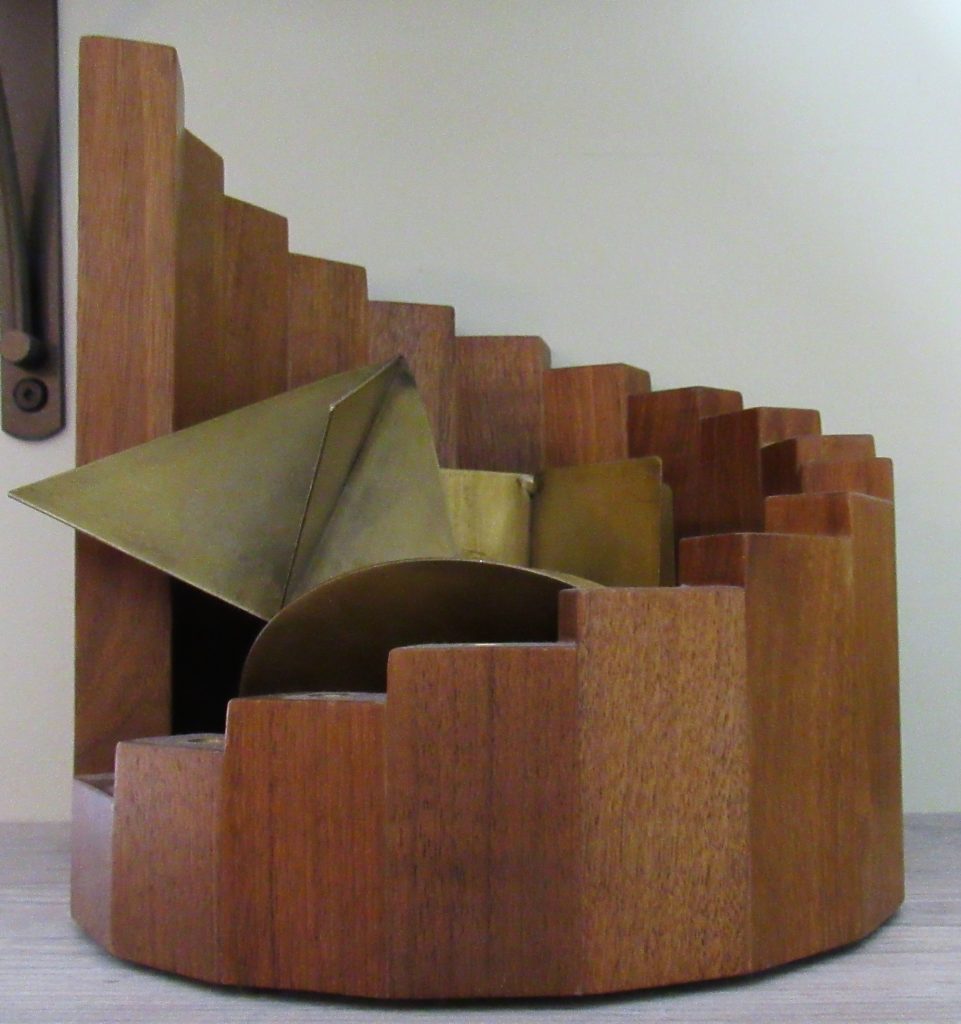
Not all my wood candleholers are lathe-turned or singles. I picked up this spiraled candelabra for a song and display it with metal geometric forms in it, as if it were a bowl.

The odd-shaped candleholders in this grouping are all handmade and were less than $10 each.
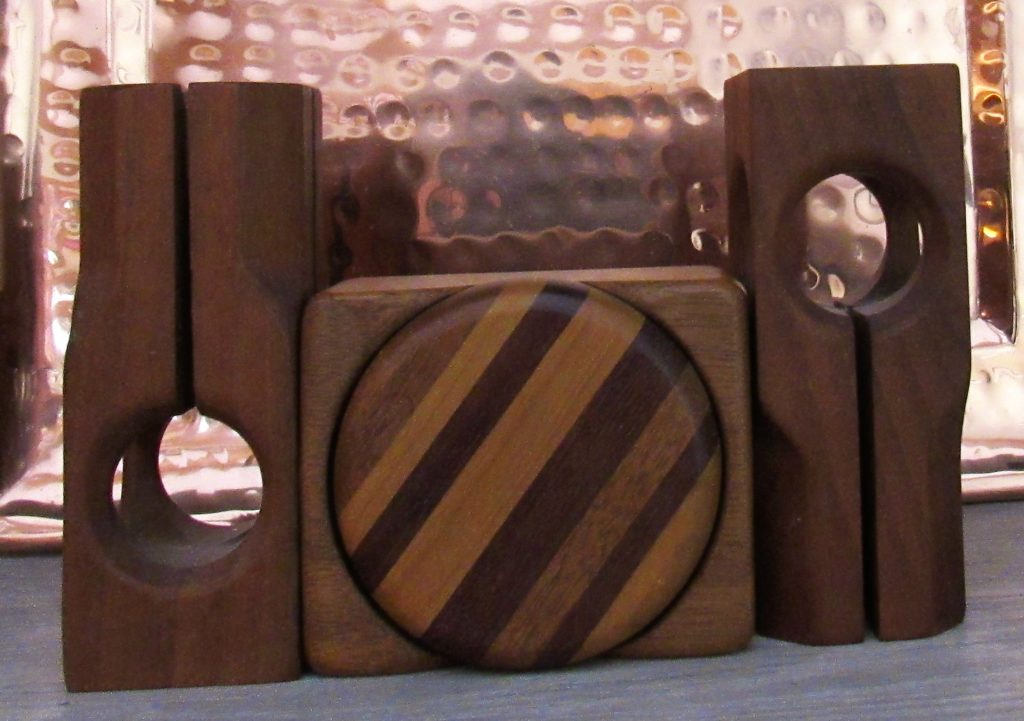
These pieces are also handcarved. The box in the middle is displayed on its side to show off the wood grain in the lid. Flanking it are matching candleholders in a key design–one right-side up and one upside down.
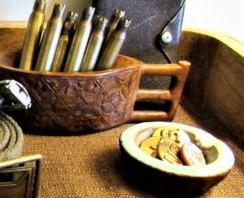
This cup holding shell casings from the 21-gun veteran salute at my father’s funeral is Austrian and hand-carved.
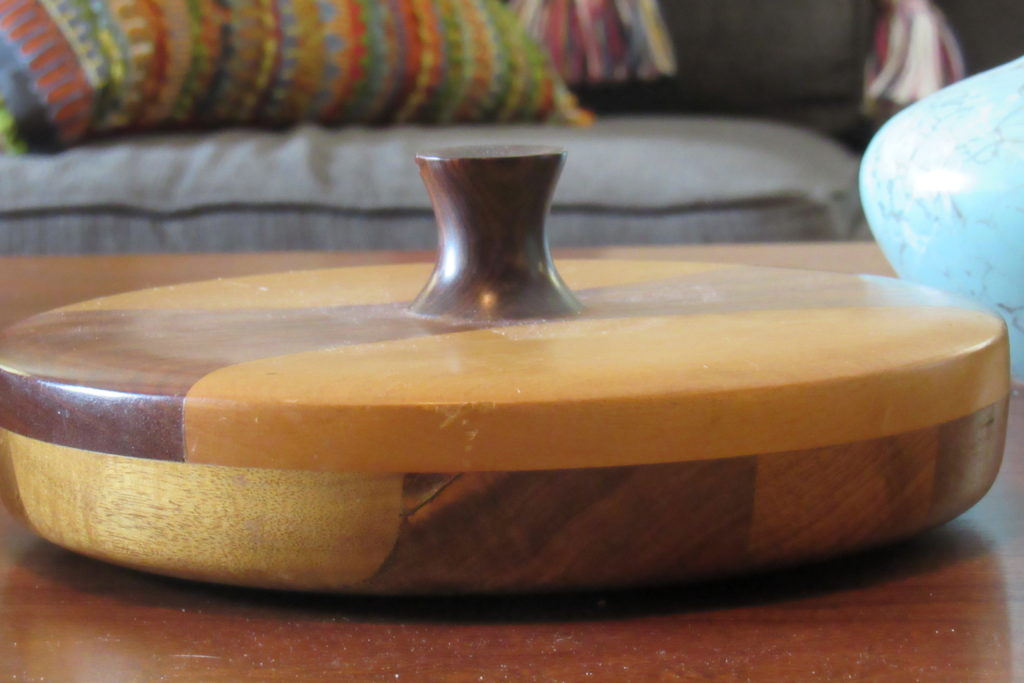
But my current favorite wood piece is this vase, which cost me only $7. It’s signed “M. B. Jenks, Carrales, New Mexico” on the base and dated 1990. The maker has also identified the woods used: bloodwood, alder, myrtle and cocobolo. Though in the Danish modern style, it obviously is not Danish in origin.

A new Danish modern wood item on my radar is the peppermill. I bought several to resell, but they haven’t sold, so I’m thinking of keeping them. On hubs’ to-do list is adding a shelf over my stove to display them. Although all are usable, I don’t plan to use them. I like their sculptural appeal–they look like chess pieces.

These two are my most recent additions. They sold low–$3 each–because they were missing their top stoppers and the wood was scratched and dried out.
I don’t mind the missing stoppers because the shapes still work well for display. As for the condition of the wood, I simply rub down all my wood pieces periodically with mineral oil on a soft cloth to restore the wood’s luster and disguise imperfections.
5. Enameled-copper
I used to have more handmade enameled-copper items, but I sold off a few.
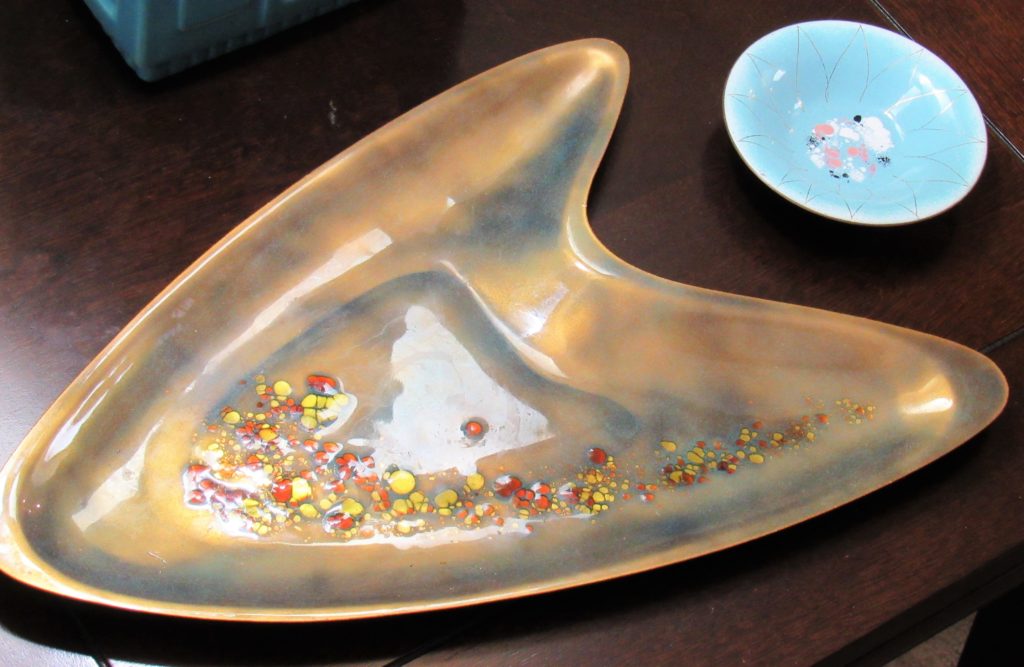
Right now I just have these two pieces–the smaller one signed and by a well-known artist. The larger boomerang came with a bit of a chip inside, but I loved the shape so much I overlooked that. Each cost $10 to $20.
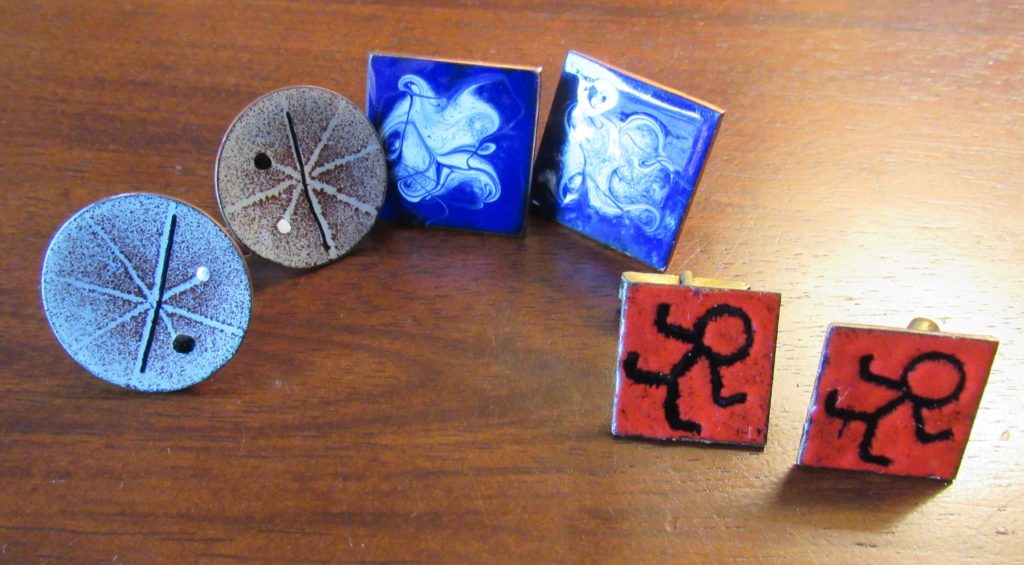
Enameled-copper jewelry was also popular in the 1950-60s. I bought these cufflinks for my husband and paid about $25 for the lot. He receives compliments on them every time he wears them because they’re so unusual compared to what you find for sale in store.
Remember…
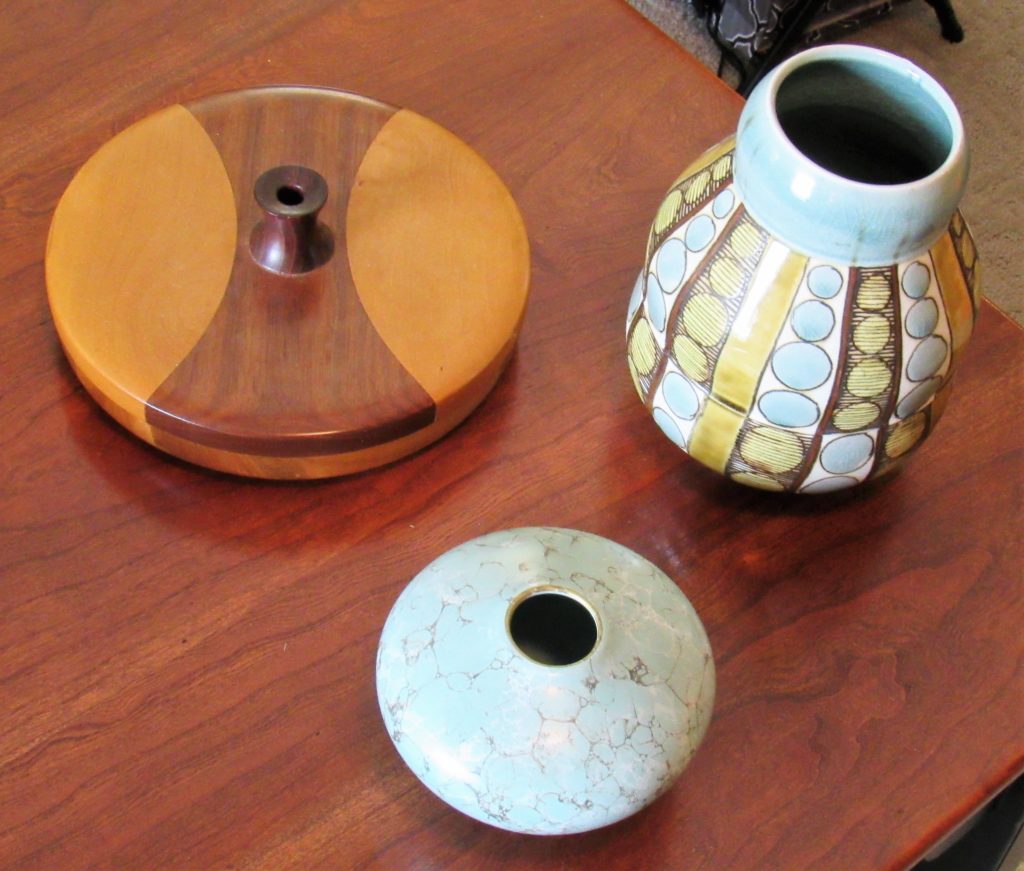
- A collection is three or more similar items. You do not need dozens of similar items to create impact in your home, though that’s fine, too. It’s simply up to you.
- Grouping items in a collection creates more impact, but that doesn’t mean you have to have EVERYTHING in the collection in one place. I have shelves in my living room where most of my collections are displayed, but also smaller groupings scattered everywhere from kitchen to bedroom to bath.
- Feel the fear and buy anyway. The world won’t blow up. As long as you shop around, compare prices, read descriptions and return policies, examine photos, AND mind you’re budget, you’ll be fine.
- Expect some buyer remorse, but know that it’s not the end of the world. Someone else will LOVE what didn’t do for you what you expected, and it’s easy to resell an item on ebay, Etsy or other online platforms. You can buy postage online and even schedule a free to-your-door pickup by your mailman.
If you want more…
Stay tuned for future posts on how to display collections in your home and ideas for items to collect (beyond what I collect) with links to vintage items for sale in my Etsy store.
You also might enjoy these books that focus on building and curating your collections. Just click on the (affiliate) links to browse and/or buy:



